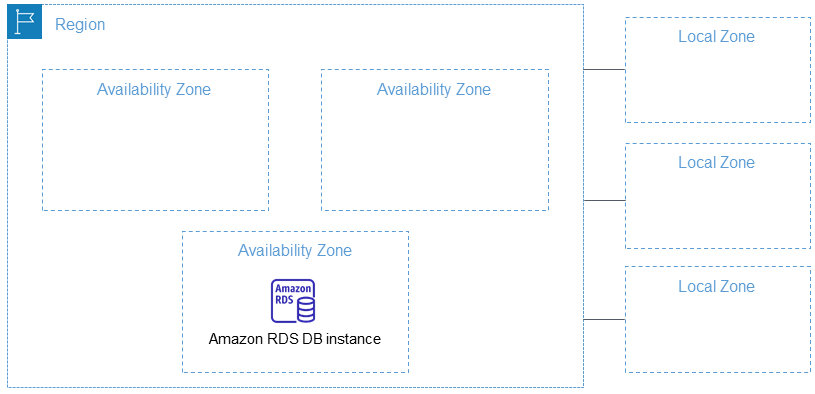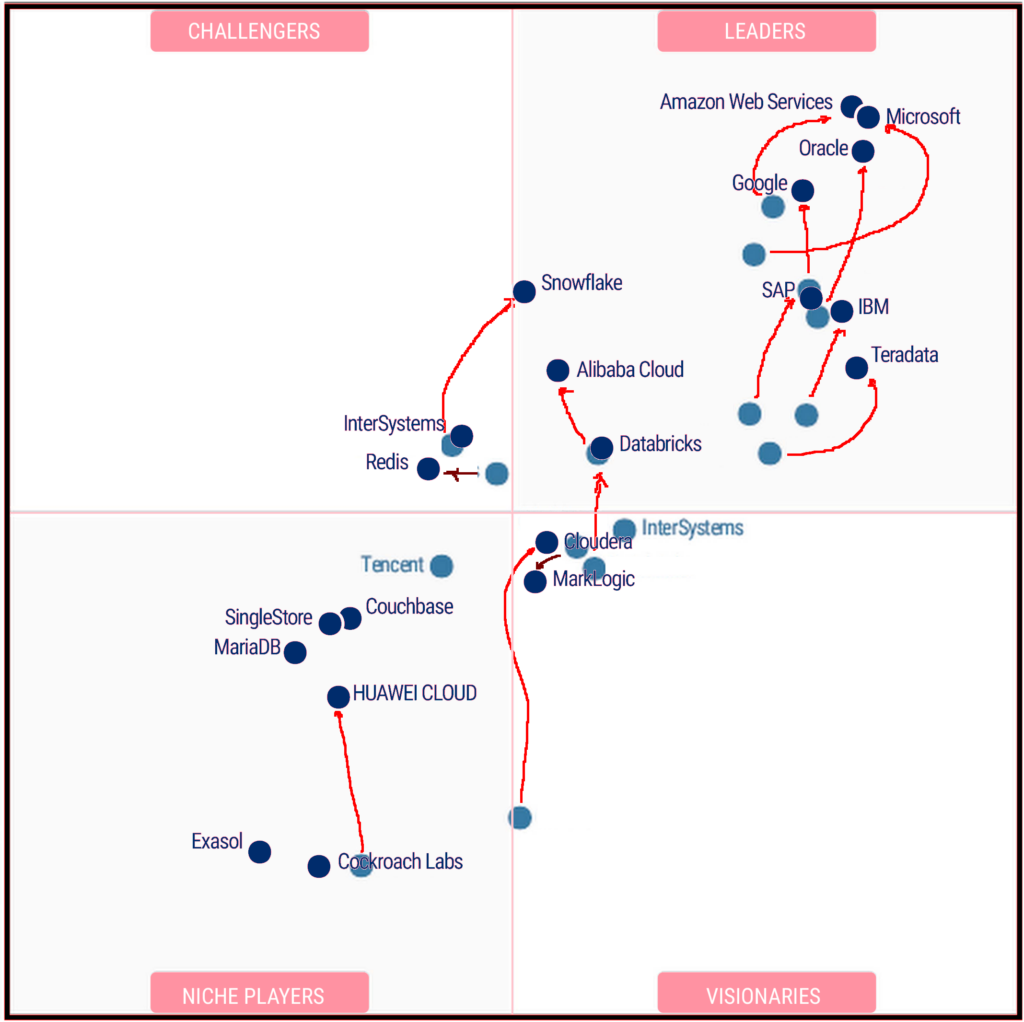Like many, I ditched my out of date ISP provided home gateway a few years back, and about a year ago put in a Unifi Dream Machine Pro as a home gateway, and a pair of Unifi Access Points, implementing WiFi 5 (802.11ac), and able to take better advantage of the 1GB/50MB NBN connection I have.
Now, I find that WiFi 5 maxes out at around 400 MBit/sec, so I’ve been waiting for the newer WiFi 6 APs to launch – in particular the In-Wall access point. However, then comes along WiFi 6E, using the newly available 6 GHz spectrum, as well as dropping to the 5Gz and 2.4 GHz spectrum.
Then I went one further, and acquired a 16 TB HDD into the Unifi Dream Machine Pro and a single G4 Pro camera. This gave me around 3 months of continuous recording, and has helped pin point the exact time a neighbours car got lifted, as well as showing us the two times before that the perps drove past – all from the end of a 50 meter driveway an the other side of a closed vehicle gate.
I wanted to have an easy way my family can bring up the video feed on the TV, large enough to see detail from each camera.
But then the pandemic hit, and the global supply chain brought things to a standstill. Unifi, and their Australian distributors and retailers, have been sorely out of stock for a long time. Only one WiFi 6E product has launched from Ubiquiti thus far, and like most of their products, immediately sold out on their US store and hasn’t made it to Aus yet. Even the UDM Pro Special Edition hasn’t surfaced either in stock in the US, or from the Australian Distributors.
So it was with some glee I found just 5 of the Unifi Viewport devices had made it to Australia last week, the first time I’d seen stock in a year (I could have missed it). So I pounced on it, and today I unboxed it.
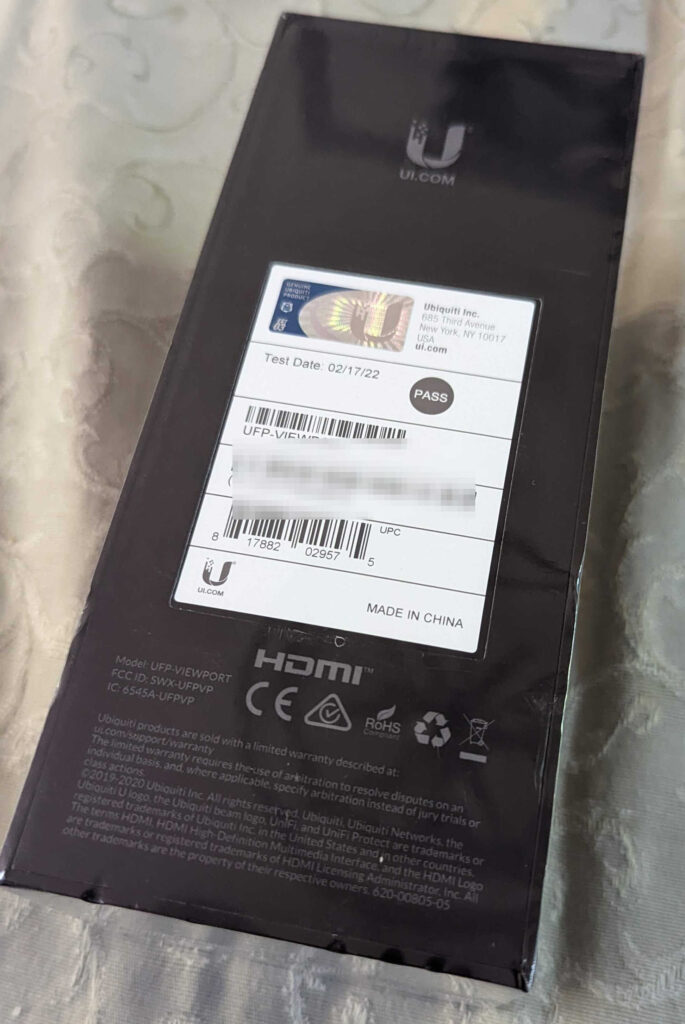
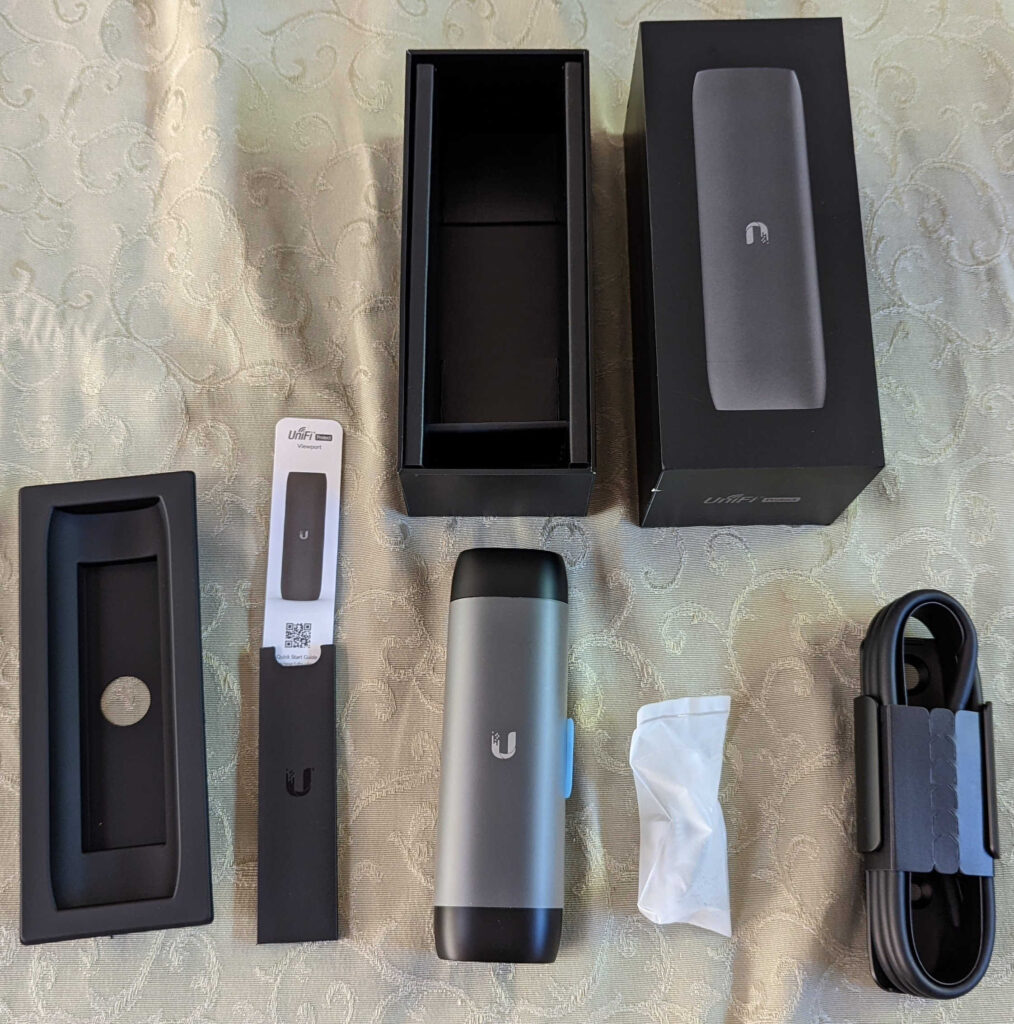
The device shipped with an HDMI cable, some screws and a wall mount, and a small slip of instructions.
At one end of the device is a standard Ethernet port, th eother end has an Ethernet-out port, and an HDMI-out port. That’s handy if you already have a device that’s on Ethernet, like your TV itself, without running another patch back to your switch.
The actual Viewport itself was larger than I had expected, as shown when I hold it in my hand here:
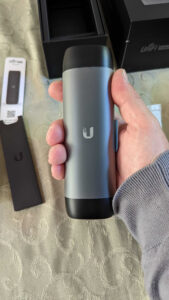
I plugged it into a patch to a POE port on my Switch-8, and immediately it powered up, took a DHCP lease, and was shown as pending for adoption into my network.
The adoption took a moment, then a firware update and reboot, and then it automatically connected and started showing the default layout of cameras from Unifi Protect.
There were no visible lights to indicate the unit was powered on. Meanwhile, the device showed up in the console, with the following settings:

As you can see from the above, the “Select a Live View” comes from the Protect web app. I created a second Live view configured for four cameras, dragged the one camera I g=do have to one of the quadrants, and then could update the Viewport to instantly show the alternate 4 quadrant view.
The end result, on an 80″ TV looks like this:

I left the unit streaming to the TV for several hours, and it didn’t miss a beat. I could feel a little warmth from the Viewport, but not enough that I would be alarmed.
If I were running a larger security setup, I could imagine having several large TVs each with their own Viewport, but showing different Live Views (with one showing just he primary camera of interest).
There’s no administrative control that I’ve seen on the Viewport itself. You cant change or select cameras, you cant shuttle/jog the stream forwards or backwards. It seems to do one thing – stream current feeds – and do it reliably (thus far).
The video image was crisp and clear (the above image was when it had changed to night mode). The time stamp in the stop left corner appeared to roll forward smoothly. I couldn’t measure the frame rate, but it seemed pretty good – perhaps 20 fps, maybe 25 fps.


